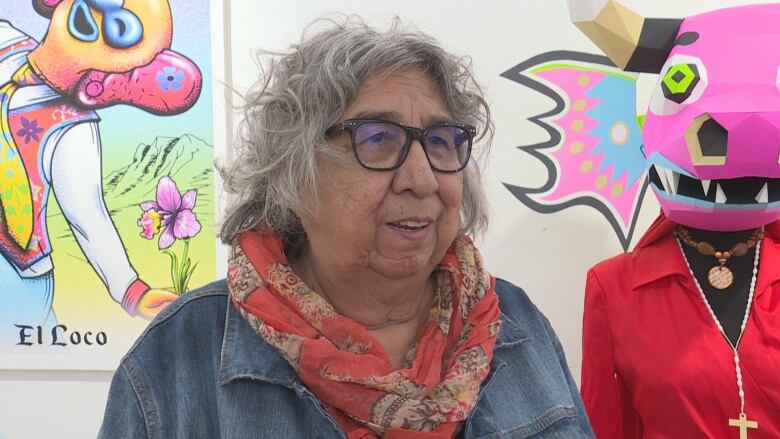Teacher's dream of Blackfoot language 'Sesame Street' inspires art exhibit
29 cartoons illustrating Blackfoot words on display at cSpace King Edward

An art festival in Calgary is showcasing how animation can introduce an Indigenous language to new audiences and perhaps future speakers.
Currently on display at the Festival of Animated Objects is an exhibit featuring 29 animated cartoons that illustrate words in the Blackfoot language.
The exhibit was the brainchild of Fort Macleod teacher Celestine Twigg, who dreamed of creating a Blackfoot language version of "Sesame Street."
"A lot of our children learn to speak English through Sesame Street," she said. "So why can't they learn to speak Blackfoot through cartoons?"
Twigg shared her vision with producer Xstine Cook, who is also co-artistic director for the Festival of Animated Objects. They worked to make Twigg's dream a reality.

The animation students collaborated with Blackfoot language learners, who recorded the pronunciation of over 80 Blackfoot words.Thestudents then spent three days in small groups coming up with concepts and storyboardingtheir ideas.
"Any language you learn, there is so much about the culture you learn from the language," Cook said.
"In Blackfoot, for example, the words are very action oriented. Like the word for snake, if you directly translate it, is 'the one that crawls.'"
The organizers pivoted online and put out a call inviting animators across the world to take on the project.Many Canadians responded, as did animators in the United States and England.
The result was artworkthat brings humour and fresh context to a language some might be hearing for the first time.
"Art has a magical way of translating things to all people," Cook said.
For Twigg, she hopes to be part of similar projects in the future.
"I'm on my way now," she said. "Nothing's stopping me."
The Blackfoot Language Animation Projects ison display at cSpace King Edward in Calgary's southwest. The exhibit runs through the weekend.
With files from Tom Ross












_(720p).jpg)


 OFFICIAL HD MUSIC VIDEO.jpg)
.jpg)



























































































